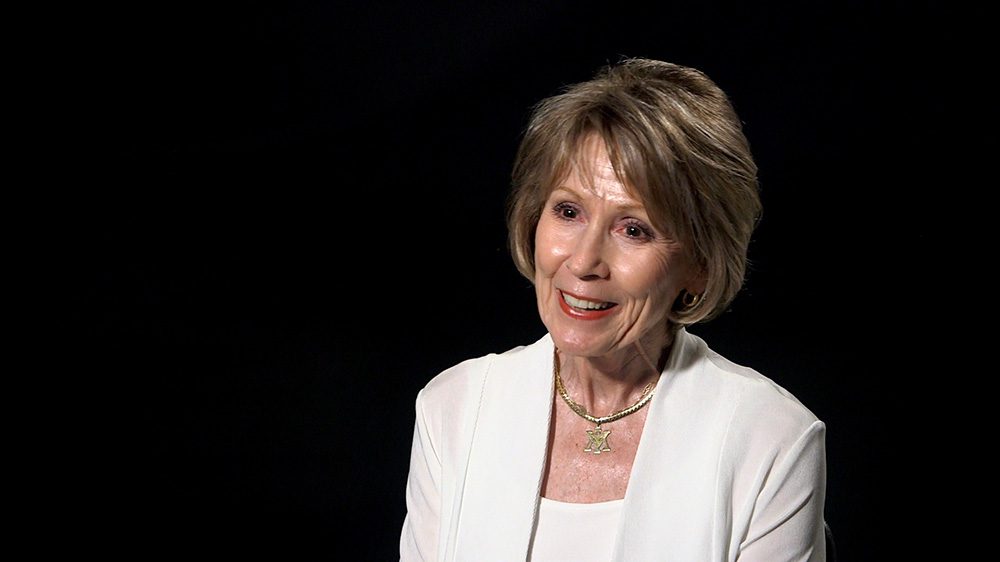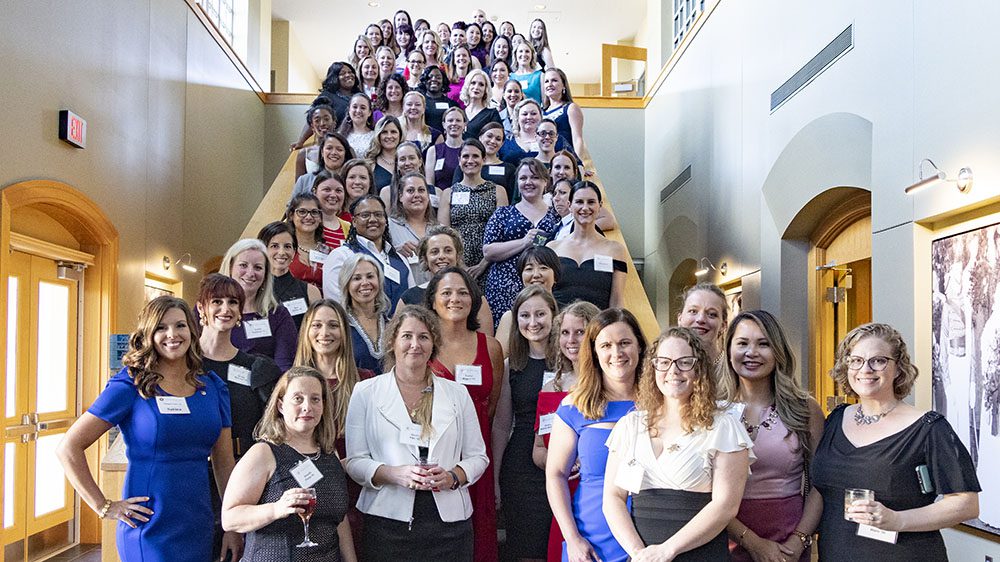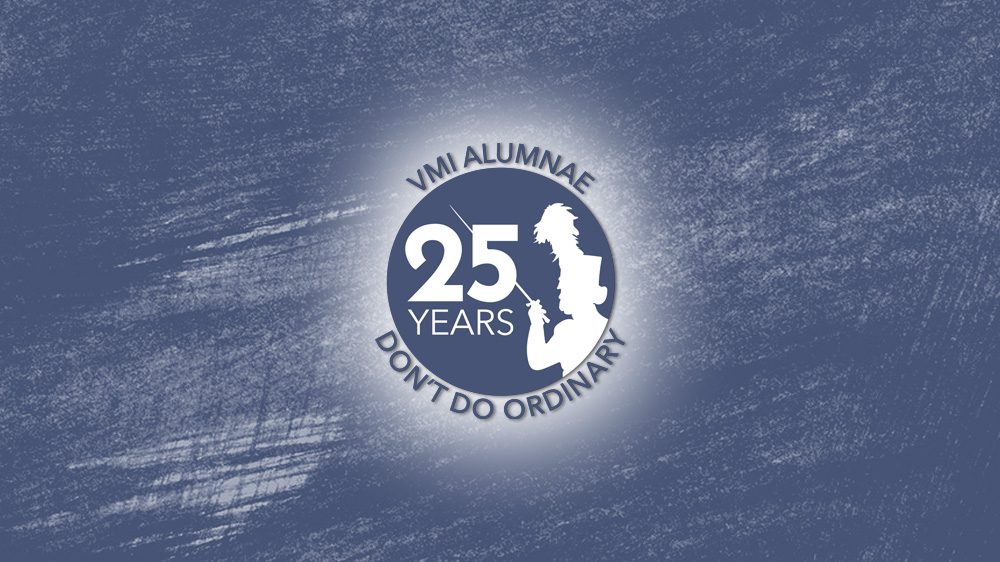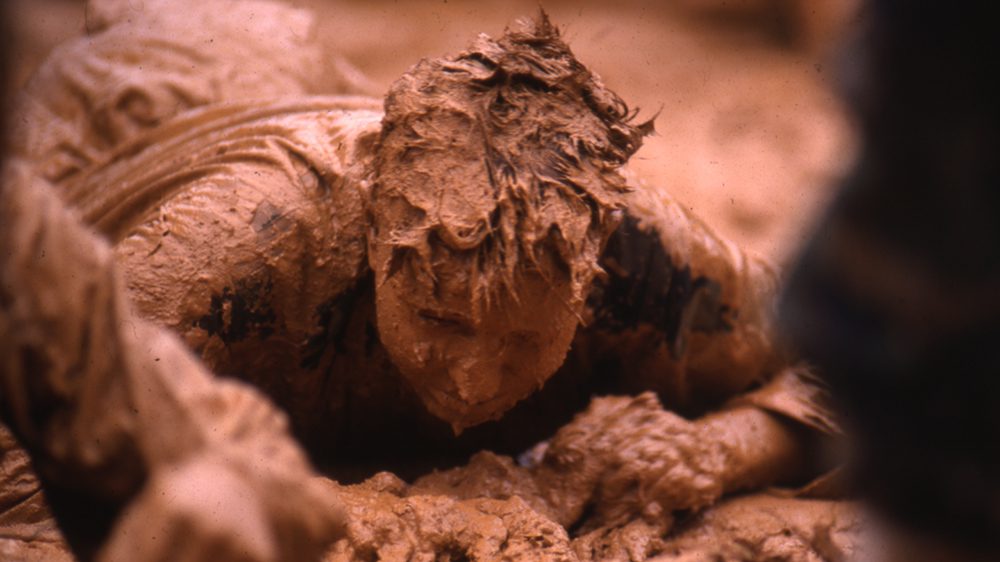Before the first class of female cadets pioneered the way for women at VMI in 1997, there was a woman helping lay the groundwork for their entrance. This woman was Carole Green.
As the wife of an alumnus, Brig. Gen. Robert “Bob” Green ’67, Carole Green has spent many years involved with VMI, beginning when her husband was a cadet at the Institute. She was his Ring Figure date. Later, both Greens worked on post—he as deputy superintendent for finance, administration, and support, and she as Alumni Association vice president of alumni activities, a position she held for 15 years.
Thus, when she was asked to be a part of the Assimilation Committee for female cadets, Green took the responsibility to heart. Green advocated for their potential and benefit at the Institute. Today, she is just as passionate about VMI and the legacy female cadets continue to leave there. “I have always had a great affection for VMI,” said Green.
In 1997, Green was hired to assist Col. Mike Bissell ’61, who was the architect of the VMI assimilation program. Their mission began with talking to faculty, staff, and cadets, as well as reviewing each part of post.
“The plan really took us a year to implement,” recalled Green. “We went over everything that went on at VMI.
“We looked at everything in barracks and everything in the academic buildings to be able to assess what really needed to be changed and what didn’t because we wanted to maintain as much of the character as possible without changing too many things.”
Meanwhile, their efforts were met with continuous skepticism. One popular argument concerned women’s physical ability to complete the VMI Fitness Test.
“I kept hearing, ‘Well, women won’t be able to do the VMI fitness test.’ And I took exception with that,” said Green. “I felt like, ‘Well, we’ll see.’”
She decided the best way to prove a woman’s capability was to do it herself. “I went to Col. Coale, who was the head of PE and physical fitness, and I asked him if he could design a program for me to develop the strength I needed to do pullups,” said Green.
After training with Coale and working out in the VMI weight room, Green surpassed the test requirements, performing 21 pullups. “I did take the VMI Fitness Test and passed it,” said Green. “It thrilled me to be able to prove that yes, they could—women could do that.”
In another part of the assimilation plan, Green and Bissell paired with Kevin Trujillo ’98, the 1st Class president at the time, to find dykes for the incoming female cadets since there were no women yet at VMI.
“With Kevin’s assistance, we hand-picked all the male cadets who would be dykes for the females coming in. That was very successful,” Green recalled. “We had a great group of young men [who] really took that responsibility seriously and looked after their female rats in a very good way.”
Despite victories like this, Green said female cadets still faced much animosity in their first year. “It was a hard experience for them. They experienced quite a bit of negativity, but they persevered,” said Green.
With continued efforts and conversations, the tide slowly began to shift. “In the second semester of the rat year of the first females that came in, Col. Mike Bissell and I decided we would form a committee of female and male cadets from that class to meet on a regular basis to discuss problems they saw among themselves, as well as in the Corps.”
As male and female cadets were able to communicate and problem solve, Green said the conversations were highly successful. “I think they had a paradigm shift when they were actually able to talk to each other and tell each other how they felt, finally realizing what impact certain things that happened had on them.”
For opposition beyond the Corps, Green’s approach was to make introductions. “To one of the most ardent objectors to women coming here, I said, ‘OK, you’ve got to meet one of these girls face to face because you just see them as the females,’” said Green. “And so, I was able to arrange a meeting between him and one of the female cadets who was quite impressive. He met me later, and he said, ‘Well, I have completely changed my mind.’
“So that was something I always tried to tell somebody who had objections,” Green continued. “I said ‘You only see them as the women here. You need to engage them. You need to talk to them.’”
Green values the character required of women who choose the challenge of VMI, and she has full faith in the excellence and contributions these alumnae continue to make. “I can remember talking to one of the ladies from the Class of 2010,” said Green. “She was a Marine ROTC, and I asked her, ‘Why VMI?’ She said, ‘Ma’am, because it’s the hardest way.’
“Some women want that challenge; some don’t. But the ones who go through VMI and complete that challenge are so impressive.”
-

Victoria Ferris Social Media and Communications Strategist
The social media and communications strategist is responsible for creating compelling, audience-appropriate, multi-channel content for social media, and for monitoring the VMI Alumni Agencies' social media accounts. The strategist supports all communications efforts, including email marketing deployment and training, website updating, and video editing.

Mattie Montgomery Assistant Editor
The assistant editor assists the editor-in-chief in various tasks relating to the production of quarterly and monthly publications, as well as prepares written materials for publication. The assistant editor serves as liaison between class agents and chapter presidents and the Agencies’ publications, as well as provides backup photography for events.




